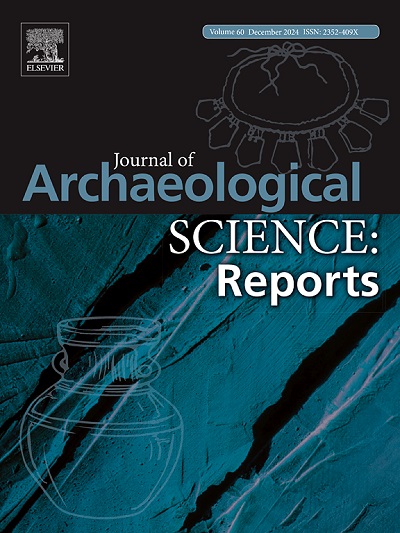Raw material, typology and technology of tools made on animal-derived osseous materials from Bihar: Neolithic to Kushana period
IF 1.5
2区 历史学
0 ARCHAEOLOGY
引用次数: 0
Abstract
Evidence outlining the subsistence pattern of the Early Agro-Pastoral community of Bihar, which is available in front of us in the form of remains made of stone, metal, terracotta, and osseous material. Much study has been done on the artifacts made of various mediums, not so much on the substances like bone, antler, ivory and tortoise shell in study area. It gives information regarding the specific utilization of multifarious animal species by prehistoric societies. The bone tools from the Neolithic culture form the initial stage of manufacturing process in the assemblages of Bihar. Because of its physical properties, it was one of the most preferred raw materials used by the prehistoric community to make tools, weapons, toys, and ceremonial objects. This paper aims to re-examine bone tools available for study and review published materials on bone artifacts recovered from the Neolithic period to the Kushana period located in Bihar. Through methodological approaches, significant information can be drawn about the manufacturers and consumers of these objects. A techno-typological study has been conducted primarily focused on the manufacturing techniques of the tools. For the identification of materials, the description published in excavation reports was applied. The aim of the present investigation is to analyse the tools typology, technology, and preferred raw materials, all of which seem to have considered crucial for the social and economic activities of the early community of Bihar.
比哈尔邦动物骨骼材料制成的工具的原材料、类型学和技术:新石器时代到库沙那时期
勾勒出比哈尔邦早期农牧社区生存模式的证据,摆在我们面前的是由石头、金属、陶土和骨骼材料制成的遗迹。研究地区对各种材料制成的人工制品的研究较多,对骨头、鹿角、象牙、龟壳等材料的研究较少。它提供了有关史前社会对各种动物物种的具体利用的信息。来自新石器文化的骨制工具在比哈尔邦的组装中形成了制造过程的初始阶段。由于其物理特性,它是史前社会最喜欢使用的原材料之一,用于制造工具,武器,玩具和仪式物品。本文旨在重新审视可用于研究的骨工具,并回顾比哈尔邦新石器时代至库什那时期的骨制品的出版材料。通过方法学方法,可以得出关于这些对象的制造商和消费者的重要信息。技术类型学研究主要集中在工具的制造技术上。对于材料的鉴定,采用了发掘报告中公布的描述。目前调查的目的是分析工具类型、技术和首选的原材料,所有这些似乎都被认为对比哈尔邦早期社区的社会和经济活动至关重要。
本文章由计算机程序翻译,如有差异,请以英文原文为准。
求助全文
约1分钟内获得全文
求助全文
来源期刊

Journal of Archaeological Science-Reports
ARCHAEOLOGY-
CiteScore
3.10
自引率
12.50%
发文量
405
期刊介绍:
Journal of Archaeological Science: Reports is aimed at archaeologists and scientists engaged with the application of scientific techniques and methodologies to all areas of archaeology. The journal focuses on the results of the application of scientific methods to archaeological problems and debates. It will provide a forum for reviews and scientific debate of issues in scientific archaeology and their impact in the wider subject. Journal of Archaeological Science: Reports will publish papers of excellent archaeological science, with regional or wider interest. This will include case studies, reviews and short papers where an established scientific technique sheds light on archaeological questions and debates.
 求助内容:
求助内容: 应助结果提醒方式:
应助结果提醒方式:


